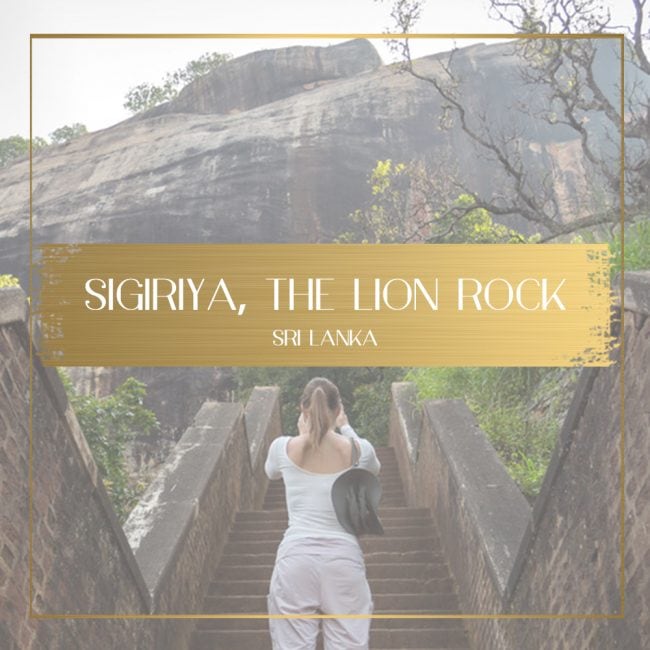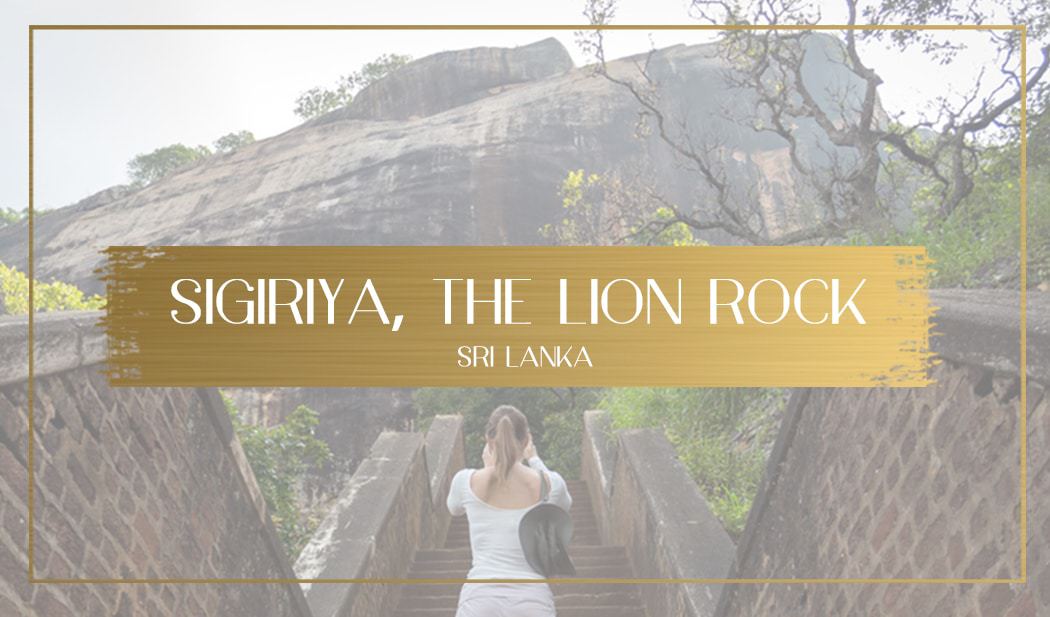Sigiriya, Sri Lanka’s most visited site, is a 200m high towering rock topped with the ruins of an ancient palace and decorated with frescoes that has been recognized as a UNESCO site since 1982.
The rock was chosen in 477 BC by King Kasyapa as the site for his new Palace and capital of Sri Lanka thus moving the center of the empire from Anuradhapura to Sigiriya. When he died, a mere two decades later, the capital was moved back to Anuradhapura and Buddhist monks returned to the monastery that was there for eight centuries before the palace was built. The monastery was occupied until the 14th century.
King Kasyapa seized the throne from the legitimate son of the King through a coup and knew that his half brother would come back for it. Afraid of a vengeful invasion, he considered the rock a much safer place than Anuradhapura. The Palace was built as a defensive structure and its position at the top of the rock were considered of immense strategic value.
Going up hill the 1,250 steps one passes several defensive mechanisms from boulders ready to be slid down the side of the rock to oncoming attackers to steep walls and stairs. Even to this day, with proper steel staircases, the ascend requires a lot of faith in the strength of the construction and a focus on going up. Turning you head to look down is a sure way into Fearland, especially in the last few steps to the top.
The structure is so impressive that it is hard to believe that an ancient civilization that inhabited the island over 1,500 years ago had the skills and techniques required to bring all the materials up the 90 degree walls. Old stairs carved on the face of the rock show how the monks and visitors made their way up.
It is not just the constructions which are impressive, the frescoes could have been as high as 40m and as long as 140m with beautiful women in colorful dresses when they were first painted. Some of them are perfectly visible today but most have disappeared. Legends recount that the women depicted were part of the King’s harem.
The rock received the name of Sigiriya, or Lion Rock, because of a lion statue located at the main entrance on the plateau that can be found half way up the climb. Today, only the lion’s claws remain as the head collapsed years ago but it is not hard to imagine the grandeur and power that the statue must have caused on the visitors’ mind when walking through its mouth.
The King not only decorated the rock with frescoes but also constructed a Mirror Wall that was so polished he could see himself reflected on it. Today, the wall is a century’s old witness to the historical relevance of the site. Through the years, visitors used to scribble poems and sentences on it professing their love and admiration. It is believed that some of these poems date back to the 8th century making Sigiriya a pilgrimage and popular place for visitors for over one thousand years.
On the lower levels there are caves and various spaces dedicated to teaching, audiences and other. The entrance to the rock is a large garden with a middle fountain. From above, one can see three types of gardens: water gardens, boulder gardens and terraced gardens with various water conduits, subterranean rivers, hydraulic systems, dams, ponds and pools.
They are some of the oldest landscaped gardens in the world and unique in their form and structure. Overgrown vegetation and trees have now taken over a lot of the structures giving the place an eerie feeling.
Go to Sigiriya in the early morning before the crowds arrive after 8am. The site closes at 5,30pm so you won’t be able to see the sunrise of sunset from there. Doors open at 7am so you could enjoy golden hour and still see the sun rising if you are there are soon as they open.
Tickets are USD30, like most other Sri Lankan UNESCO sites. A steep price when compared to the half a dollar paid by the locals. Take it easy around the area and explore all the gardens. Avoid just get in and out, take your time to get lost in the top construction but also in the lower level gardens and caves. Truly magical.

